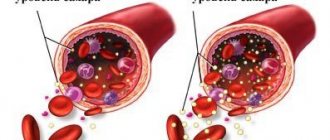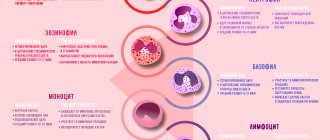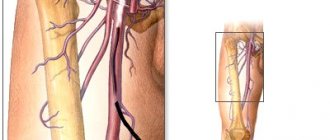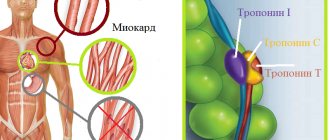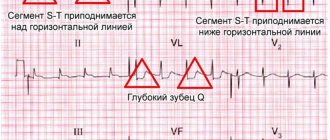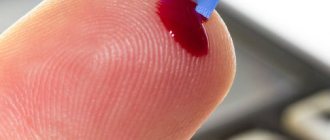Scientific editor: M. Merkusheva, PSPbSMU named after. acad. Pavlova, medical practice. January, 2020.
Synonyms: Oral glucose tolerance test, GTT, glucose tolerance test, sugar curve, Glucose tolerance test (GTT)
A glucose tolerance test is a laboratory test that measures plasma glucose levels on an empty stomach and 2 hours after a carbohydrate load. The study is carried out twice: before and after the so-called “load”.
The glucose tolerance test evaluates a number of important indicators that determine whether a patient has a serious prediabetic condition, impaired glucose tolerance, or diabetes mellitus.
Indications for carrying out
There are enough reasons to order an analysis. As a rule, we are talking about early screening of diseases or verification, confirmation of diagnosis.
Increased concentration of sugar in urine
Called glycosuria. As a rule, it is accompanied by a large volume of urine. Because sugars are not retained and are not absorbed back. The amount of urine may increase significantly. At a rate of 1-2 liters per day, we are talking about 5 liters or more.
Deviation develops at any stage of pathological processes and metabolic problems. Therefore, the test is also performed as a method of secondary prevention.
Suspicion of diabetes mellitus
Based on metric data, also if such thoughts arise after the initial examination. A glucose load test is mandatory.
It makes sense to undergo the examination more than once, since errors are possible. Plus, a more accurate modification is used, when blood is donated every hour or more often and a sugar curve is built.
Abnormally high capillary blood glucose levels
With a simple general analysis. Increased concentrations in liquid connective tissue clearly indicate pathologies such as diabetes.
Why exactly this happens is difficult to say. It is highly likely that little insulin is produced or the tissues are not sensitive enough to it. What the problem is remains to be seen.
Unfavorable heredity
Fortunately, diabetes is not passed on from parents to children. However, the predisposition may be genetically determined.
It makes sense to carry out a glucose tolerance test on a regular basis. In order to detect pathological processes of a metabolic nature at an early stage.
High body mass index
Obesity is a risk factor for developing diabetes. The probability, according to various estimates, increases several times. The more advanced the pathological process, the higher the risks.
Obese patients are recommended to take a GTT test 2-3 times a year in order to detect the problem in advance and begin treatment.
Age over 50 years
Another risk factor. Women are especially susceptible to it. Because during menopause, menopause, the concentration of sex hormones decreases.
Meanwhile, they are precisely responsible for regulating endocrine processes. At least partly.
Attention:
Glucose increases in every third woman over 50 years of age.
History of arterial hypertension
The likelihood of diabetes mellitus increases. Normal blood flow is disrupted. Organs and tissues do not receive enough nutrients and oxygen. Hence the gradual decrease in the efficiency of the pancreas. Over time, diabetes develops.
Overt insulin resistance
Develops against the background of various diseases. Often in overweight patients. On the other hand, other options are possible. For example, a problem with the thyroid gland, etc.
Detected resistance is the basis for examining the entire body to discover the cause. Treatment options depend on the specific diagnosis.
Pregnancy
Gestation itself is an increased risk factor for diabetes. Therefore, the expectant mother systematically undergoes a general blood test.
Already on demand, a glucose tolerance test is prescribed (for example, if a pregnant woman’s fasting glucose is above 5.1, but below 7.0 mmol/l). It is carried out once a trimester, or more often when there is such a need.
Systematic use of drugs
Some medications can disrupt hormonal levels and disrupt insulin production. These include estrogens (oral contraceptives), glucocorticoids like Prednisolone. Also diuretics.
If necessary, the doctor cancels the dose or adjusts the dosage of the drug. This is the main way to correct the condition and normalize blood glucose levels.
Metabolic disorders
Especially the lipid profile. Atherosclerosis is the most famous pathological process.
The growth of low and very low density lipoproteins is accompanied by impaired blood flow. This means nutrition and respiration of tissues. A systemic disorder begins. The pancreas also suffers.
On the other hand, metabolic problems themselves are associated with this organ. Therefore, cause and effect can change places.
Pre-diabetes condition
When blood counts have not yet been exceeded, but are already at the level of the border between normal and pathological. It makes sense to start treatment already at this stage.
A glucose tolerance test should be performed once every 3 months. Further according to the indications. Depending on the condition.
Evaluation of treatment results
The technique is used as a way of screening and checking the state of affairs after therapy. For control, both a standard laboratory test and its home versions are used. For example, “household” glucometers are useful.
The glucose tolerance test is used as a universal method for diagnosing diabetes mellitus and metabolic disorders; both the effect of insulin and the concentration of C-peptide are studied.
This special substance is responsible for normal blood flow, and therefore indirectly indicates disorders.
Glucose tolerance in children
At an early age, patients with a predisposition to the disease are referred for testing. A child who was born with a high weight (more than 4 kg) and, as he grows older, also becomes overweight, will have to be tested periodically. Skin infections and poor healing of minor abrasions, wounds, scratches - all this is also a reason to check your glucose level. There are a number of contraindications for the glucose tolerance test, which will be discussed below, so such an analysis is not done unless absolutely necessary.
Contraindications
There are not many reasons to cancel the study.
- Glucose intolerance. It is quite rare, but carries a great danger to life. When using a concentrated substance, an acute allergic reaction is possible. How it will proceed is a very difficult question. A minor skin rash, angioedema, asphyxia, and anaphylactic shock with a fatal outcome are possible. Patients need to warn doctors about their problem.
- Recent emergencies. For example, a heart attack or stroke. In this case, the glucose concentration will be higher; this is the natural state of affairs. At least in the context of the described pathological processes.
- Late stage pregnancy. In the third trimester, the use of glucose tolerance techniques is impossible. If there is an urgent need for this, the test is still prescribed. But strictly under the supervision of doctors. Because sudden surges in sugar levels are possible. This is extremely dangerous for the pregnant woman and the child itself.
- Childbirth. After gestation has resolved, the test cannot be performed for several weeks. Until the woman comes to her senses. The condition is monitored using a blood test. This is a simple and affordable screening method. The decision is made by the gynecologist leading the patient.
- Sugar concentration is more than 7 units (mmol per liter). In this case, research cannot be carried out. It's a matter of life. There is a high probability that there is already a violation of sugar processing. If you give a patient concentrated glucose, it will end badly. Most likely, your blood sugar will rise sharply. Because there is not enough insulin. Is it dangerous. Coma and death from complications are possible.
- Infectious diseases. In the acute phase there is no question of any glucose tolerance test. Since the concentration will initially be higher than normal. This is the body's response to an infectious process. You need to wait a while. Until the patient recovers from the illness.
- Taking medications. For example, oral contraceptives. Or other hormonal drugs. Because they themselves affect metabolic processes and increase the concentration of glucose in the blood. It is not known what effect sugar intake will have. First, the drugs are discontinued and the drugs are completely removed from the body.
- The period after the surgery. Until the acute condition passes.
There are not many contraindications, but they must be strictly observed. At a minimum, to get accurate results. And even save the health and life of the patient.
How is the analysis carried out?
The first test is taken on an empty stomach (its results are taken as the starting position), then glucose is given to drink, the amount of which will be prescribed in accordance with the patient’s condition (childhood, obese person, pregnancy).
For some people, the sickly sweet syrup taken on an empty stomach may cause a feeling of nausea. To avoid this, it would be advisable to add a small amount of citric acid, which will prevent unpleasant sensations. For the same purpose, modern clinics can offer a flavored version of a glucose cocktail.
After receiving the “drink,” the person being examined goes for a “walk” not far from the laboratory. When to arrive for the next test, the health workers will say, it will depend on the intervals and frequency of the test (after half an hour, an hour or two? 5 times, 4, 2 or even once?). It is clear that for bedridden patients a “sugar curve” is done in the department (the laboratory assistant comes himself).
Meanwhile, some patients are so inquisitive that they try to conduct research on their own without leaving home. Well, to some extent, an imitation of TSH can be considered a sugar analysis at home (measuring on an empty stomach using a glucometer, breakfast corresponding to 100 grams of carbohydrates, monitoring the rise and fall of glucose). Of course, it is better for the patient not to calculate any coefficients adopted for the interpretation of glycemic curves. He simply knows the values of the expected result, compares it with the obtained value, writes it down so as not to forget, and later reports them to the doctor in order to present the clinical picture of the course of the disease in more detail.
In laboratory conditions, hyperglycemic and other coefficients are calculated from a glycemic curve obtained after a blood test over a certain time and reflecting a graphical representation of the behavior of glucose (rise and decrease).
The Baudouin coefficient (K = B/A) is calculated based on the numerical value of the highest glucose level (peak) during the study time (B – max, numerator) to the initial blood sugar concentration (Aisch, fasting – denominator). Normally, this indicator is in the range of 1.3 – 1.5.
The Rafalsky coefficient, which is called postglycemic, is the ratio of the glucose concentration 2 hours after a person drinks a carbohydrate-rich liquid (numerator) to the digital expression of fasting sugar level (denominator). In people who do not have problems with impaired carbohydrate metabolism, this indicator does not go beyond the established norm (0.9 – 1.04).
Of course, the patient himself, if he really wants, can also practice, draw something, calculate and guess, but he must keep in mind that in the laboratory other (biochemical) methods are used to measure the concentration of carbohydrates over time and draw a graph . The glucometer used by diabetics is intended for rapid analysis, so calculations based on its readings can be erroneous and only confusing.
Preparation
The measures are quite simple.
- For four days, a light diet low in carbohydrates is prescribed. You should not consume more than 6 grams of salt. Canned food, semi-finished products and other questionable products are also excluded. The patient must receive about 1.5 liters of water per day. This does not include liquid dishes. Do not need anymore. Less is possible, depending on your health condition. But not advisable.
- About 12 hours in advance you need to give up food. Because the glucose tolerance test is performed on an empty stomach. Food is likely to skew the results. Because the pancreas will start working.
- For 1-2 days, they give up intense physical activity. Don't overstrain yourself emotionally either. It's a question of the accuracy of the results.
- For several days you should not smoke or drink alcohol. The results will be false. Most likely positive, the body will go into a state of increased mobilization.
Stop chewing gum within 2 hours. The probability is small, but still there.
What to pay special attention to, reviews
A high-accuracy glucose tolerance test can be taken in any budget hospital free of charge under a compulsory health insurance policy. If you believe the reviews of patients who tried to independently determine the level of glycemia with a glucose load, portable glucometers are not able to provide reliable results, so laboratory results may differ radically from those obtained at home. When planning to donate blood for glucose tolerance, you need to consider a number of important points:
- You need to take the test strictly on an empty stomach, since after eating, sugar is absorbed much faster, and this leads to a decrease in its level and obtaining unreliable results. The last meal is allowed 10 hours before the test.
- There is no need to carry out a laboratory test unless absolutely necessary - this test is a complex load on the pancreas.
- After a glucose tolerance test, you may feel a little nauseous - this is confirmed by numerous patient reviews. The study can only be carried out against the background of normal health.
Some experts do not recommend chewing gum or even brushing your teeth with toothpaste before the test, since these oral care products may contain sugar, albeit in small quantities. Glucose begins to be absorbed immediately in the oral cavity, so the results may be false positive. Certain medications can affect the concentration of sugar in the blood, so it is better to stop using them a few days before the test.
What can give false results
What factors may cause inaccuracies in the results:
- Exercise stress. Excessive or insignificant. Any mechanical activity causes an increase in glucose concentration. This is a vital necessity. Because the patient requires more energy.
- Smoking. Cigarettes can provoke disorders even in small quantities. The same goes for mixtures, vapes and other modern methods of tobacco consumption.
- Alcohol. They influence in approximately the same way.
- Use of drugs. Most often you cannot refuse medications. It is important to warn doctors about taking medications. Deviations are especially often caused by diuretics, beta blockers, and psychotropic medications.
- Drinking disorders. More than 2 liters per day.
- Menstrual cycle. Affects the results only in the initial phase. When do hormonal storms begin? It is recommended to take the test 10-12 days after the start of natural changes in the body.
- A study was carried out using radiation exposure. For example, CT or radiography.
- Inflammatory processes. Any intensity. Up to the common cold.
Preparation is important because otherwise the results will be false. This leads to improper treatment and health problems.
Features of GTT
We have already understood under what circumstances you can receive a referral to take a laboratory glucose tolerance test. Now it’s time to understand how to take this test correctly.
One of the most important features is the fact that the first blood draw is performed on an empty stomach and how a person behaved before donating blood will certainly affect the final result. Thanks to this, the GTT can safely be called “whims”, because it is influenced by the following:
- drinking alcoholic beverages (even a small dose of alcoholic drinks distorts the results);
- smoking;
- physical activity or lack thereof (whether you play sports or lead a sedentary lifestyle);
- how much sweet food or water you drink (eating habits directly affect this test);
- stressful situations (frequent nervous breakdowns, worries at work, at home while entering an educational institution, in the process of gaining knowledge or passing exams, etc.);
- infectious diseases (acute respiratory infections, acute respiratory viral infections, mild colds or runny nose, flu, sore throat, etc.);
- postoperative condition (when a person is recovering from surgery, he is prohibited from taking this type of test);
- taking medications (affecting the patient’s mental state; hypoglycemic, hormonal, metabolism-stimulating drugs and similar ones).
As we can see, the list of circumstances influencing the test results is very long. It is better to warn your doctor in advance about the above.
In this regard, in addition to it or as a separate type of diagnosis, they use
Blood test for glycated hemoglobin
It can also be taken during pregnancy, but it can show a falsely high result due to the fact that too rapid and serious changes occur in the body of a pregnant woman.
Passing process and types of tests
There are two main types of glucose tolerance testing.
The standard method, the oral glucose tolerance test (OGTT), requires that the patient ingest glucose, which means it is absorbed through the digestive tract.
The move is approximately as follows:
- The person arrives at the appointed time at the clinic or hospital.
- The first time blood is drawn without any special load. The method depends on the specific institution. Both capillary and venous blood are suitable.
- Next, the patient takes a concentrated glucose solution in the amount of 250 ml. Or so. It is advisable to drink this volume within 3-5 minutes.
- Then specialists wait about 20-30 minutes and take the blood again.
- The results are recorded in the protocol. The deviation clearly indicates metabolic disorders. Diabetes mellitus is possible.
The second method is not so widespread. With it, glucose is administered intravenously, bypassing the gastrointestinal tract. The course of the research will be approximately the same, except for the third point.
It is also important to consider that there are modifications within the methods themselves. The classic test involves a single blood draw after a glucose load. But there is a more accurate method - the so-called sugar curve.
- The patient takes a solution consisting of 75 g of dry glucose diluted in 250–300 ml of warm (37–40 °C) drinking still water.
- 20-30 minutes later, after the carbohydrate load, specialists take an analysis and send the person to rest.
- It is important not to overexert yourself physically and sit or lie quietly.
- After half an hour, another portion of venous or capillary blood is taken.
- This continues 5-7 times. At regular intervals.
Based on the results, a special graph is constructed. It is impossible to obtain it with an OGTT (oral test).
Attention:
If the sugar curve is normal, there is almost a 100% chance that there is no diabetes, or it is in a latent stage. The question remains open. Additional examinations are possible.
Indications for prescribing analysis
Today, such a laboratory test can be performed in any medical institution due to the simplicity and general availability of the method. If there is a suspicion of impaired sensitivity to glucose, the patient receives a referral from a doctor and is sent for a glucose tolerance test. Wherever this study is carried out, in a public or private clinic, specialists use a unified approach in the process of laboratory examination of blood samples.
A sugar tolerance test is most often prescribed to confirm or rule out prediabetes. A stress test is usually not necessary to make a diagnosis of diabetes mellitus. As a rule, an excess of glucose in the bloodstream recorded in laboratory conditions is sufficient.
There are often situations in which the blood sugar level remains in the normal range on an empty stomach, so the patient, taking routine blood sugar tests, always received satisfactory results. The glucose tolerance test, in contrast to conventional laboratory diagnostics, allows one to determine disturbances in insulin sensitivity to sugar precisely after the body is saturated. If the concentration of glucose in the blood significantly exceeds the norm, but tests performed on an empty stomach do not indicate pathology, prediabetes is confirmed.
Doctors consider the following circumstances to be the basis for conducting OGTT:
- the presence of symptoms of diabetes mellitus with normal laboratory test values, that is, the diagnosis was not previously confirmed;
- genetic predisposition (in most cases, diabetes is inherited by a child from mother, father, grandparents);
- excess sugar content in the body before meals, but there are no specific symptoms of the disease;
- glucosuria - the presence of glucose in the urine, which should not be present in a healthy person;
- obesity and overweight.
In other situations, a decision may also be made to perform a glucose tolerance test. What other indications may there be for this analysis? First of all, pregnancy. The study is performed in the second trimester, regardless of whether fasting glucose standards are too high or within normal limits - all expectant mothers, without exception, undergo a glucose sensitivity test.
Taking a test during pregnancy
During gestation, the standard oral method is not always possible. In the third trimester, the study is not carried out at all.
Why - the fact is that it is dangerous for mother and child. Sugar increases on its own, which creates the risk of diabetes (the so-called gestational form). Provocation can become a trigger for a full-fledged pathological process.
There are only two contraindications:
- Intense toxicosis. Including in the third trimester. When the late disorder begins.
- Diseases of the gastrointestinal tract. If the woman in labor cannot take glucose in this way.
Basically, pregnant women are given glucose intravenously. This is a safer way. Otherwise, the test differs little in terms of implementation and interpretation of results.
Video on the topic
How to prepare for a glucose tolerance test and how to decipher its results in the video:
Taking a glucose tolerance test is an excellent opportunity to identify problems with the pancreas. Therefore, if you have been given a referral to undergo the appropriate analysis, you should not neglect it.
A timely study makes it possible to identify and take control of even the smallest disturbances in the functioning of the pancreas, which provoke disruptions in carbohydrate metabolism, even at an early stage. Accordingly, a timely test can be the key to maintaining health for many years.
DIAGEN® - innovation in the treatment of diabetes in humans
- Stabilizes sugar levels for a long time
- Restores insulin production by the pancreas
To learn more…
Normal indicators
Glucose tolerance is the body's response to a carbohydrate load. Normal venous blood levels would be:
| State | Indicators in mmol per liter |
| Norm | Up to 7.7 |
| Prediabetes | 7.7-10.9 |
| Diabetes | More than 11 |
Regarding capillary sample analysis:
| Norm | Less than 7.5 mmol/l |
| Prediabetes | 7.5-10.9 mmol/l |
| Diabetes | Over 11 mmol/l |
When studying the sugar curve, normal values are 4-7.9 mmol per liter of blood. Time data is given in the table:
| Time | mmol/l |
| Fasting indicators | 4-7.5 |
| After 30 minutes | 4.1-7.8 |
| In one hour | 4.2-7.9 |
| 1.5 hours | 4.2-7.9 |
| 2 hours | 4.2-7.9 |
We are talking about capillary blood.
Attention:
Normal results of a glucose tolerance test depend on the reference values that are accepted in a particular clinic. Therefore, it is quite difficult to draw conclusions on your own. This is the doctor's job.
Why is a glucose tolerance test done for pregnant women?
A laboratory blood test with a sugar load is an important diagnostic measure for every expectant mother. Excessive glucose levels may be a sign of gestational diabetes mellitus. This pathology can be temporary and go away after childbirth without any intervention.
In antenatal clinics and gynecological departments of Russian medical institutions, this type of examination is mandatory for patients registered for pregnancy. The recommended time frame for taking this test is established: the glucose tolerance test is carried out in the period from 22 to 28 weeks.
Many pregnant women wonder why they even need to undergo this test. The thing is that during gestation, serious changes occur in a woman’s body, the work of the endocrine glands is rearranged, and the hormonal background changes. All this can lead to insufficient insulin production or changes in its sensitivity to glucose. This is the main reason why pregnant women are considered at risk for developing diabetes.
In addition, gestational diabetes is a threat not only to the health of the mother, but also to her unborn baby, since excess sugar will inevitably enter the fetus’s body. A constant excess of glucose will lead to excess weight gain for mother and child. A large fetus, whose body weight exceeds 4-4.5 kg, will experience greater stress when passing through the birth canal and may suffer from asphyxia, which is fraught with the development of central nervous system complications. In addition, the birth of a baby with such a weight is also a huge risk for a woman’s health. In some cases, gestational diabetes has caused premature birth or missed abortion.
How to take a glucose tolerance test for pregnant women? Fundamentally, the research methodology does not differ from that described above. The only difference is that the expectant mother will have to donate blood three times: on an empty stomach, an hour after the solution is administered, and two hours later. In addition, capillary blood is taken before the test, and venous blood is taken after taking the solution.
The breakdown of the values in the laboratory report looks like this:
- Test on an empty stomach. Values less than 5.1 mmol/l are considered normal; gestational diabetes is diagnosed at 5.1-7.0 mmol/l.
- 1 hour after taking the syrup. The normal result of a glucose tolerance test for pregnant women is less than 10.0 mmol/l.
- 2 hours after taking glucose. Diabetes is confirmed at values of 8.5-11.1 mmol/l. If the result is less than 8.5 mmol/l, the woman is healthy.
Decoding the results
Deviations are assessed by endocrinology specialists. The primary results are interpreted by the laboratory workers themselves. Indicate reference values and focus on deviations.
Three main levels are examined:
- The actual glucose concentration. A sugar curve is made, and doctors build a special schedule. Normally it should be almost a straight line. Not counting the moment of transition from the “fasting” indicators to the first analysis after exercise.
- Study of C-peptide concentration. An increase in it indicates that some metabolic disorders are occurring. But not diabetes yet.
- Insulin resistance is also being studied. As a rule, indirectly. If there are no other manifestations of disease.
The glucotest is used to determine diabetes mellitus and metabolic disorders. All deviations are interpreted as pathology. Which one exactly depends on the results of additional research.
It makes sense to conduct a comprehensive diagnosis and assess the patient’s health status. This is done by an endocrinologist. Glucose loading is an informative method, but not the only possible one.
How to Prepare for a Glucose Load Test
- The glucose load test should be performed on an empty stomach - no earlier than 8 hours after the last meal.
- The day before testing the sugar curve, you should limit your consumption of sweets and fatty foods.
- However, you should not limit the carbohydrate content of your diet - it is better to eat the foods you eat daily without any restrictions.
- It is recommended not to undertake any additional physical activity, smoke or drink alcohol 24 hours before the test.

